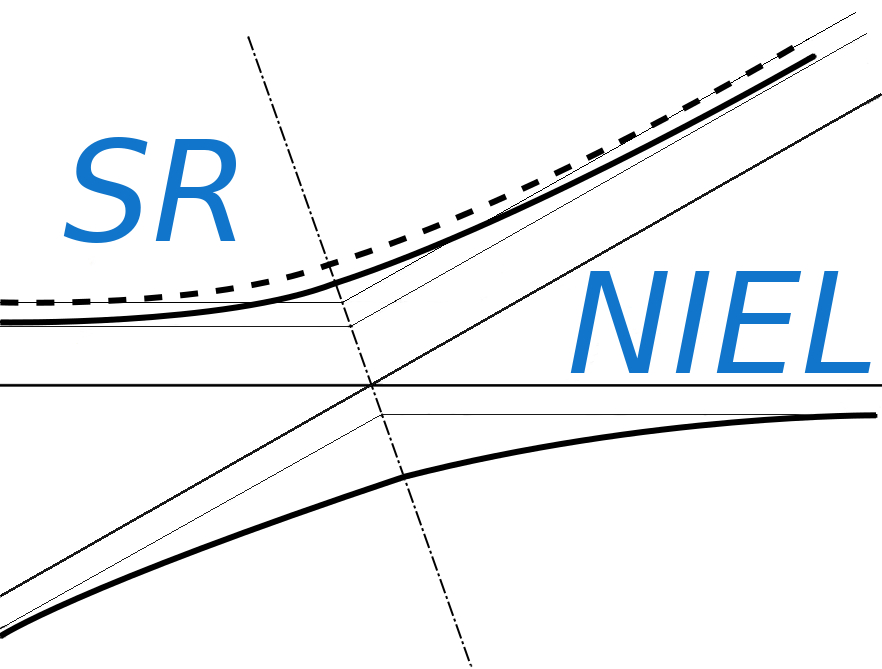In literature, nuclear mass stopping powers for compounds were usually determined by means of Bragg's additivity rule as, for instance, those ones availabe from and tabulated for the commonly employed non-relativistic treatments of ICRUM (1993) and SRIM (e.g., see this webpage). Thus, in ICRUM (1993) and SRIM (similarly to sr-niel treatment), for a compound the overall nuclear mass stopping power in units of MeV cm2/g is obtained as a weighted sum in which each material contributes proportionally to the fraction of its atomic weight.
In the following, a few sampled compounds tabulated in ICRUM (1993) and in SRIM are dealt with regard to accuracy of calculations and systematic errors which might be induced by the very slitghly differences of atomic-weigth values (A) employed in ICRUM (1993), SRIM and SR-NIEL. For such a purpose, the tabulated non-relativistic values of nuclear stopping power of elements are obtained from ICRUM (1993) and SRIM. Then, the nuclear stopping power of sampled compounds for ICRUM (1993) and SRIMare derived by means of Bragg's additivity rule using the A-values embedded in their respective treatments. Similary, for these compounds their nuclear stopping powersa are additionally obtained by means of the A-values used in SR-NIEL database. Finally, the so obtained values for compounds are compared with the corresponding ones available and tabulated in ICRUM (1993) and SRIM.
In figures 1 and 2, respectively, it is shown the percentage difference of the calculated nuclear stopping powers for compounds (obtained employing the Bragg's additivity rule with A-values from the corresponding treatments) with respect to those tabulated in SRIM and in ICRUM (1993). In figure 3 and 4, such a percentage difference is displayed when A-values for the nuclear stopping powers of compounds are those from SR-NIEL database.
In all cases, by inspecting Figures 1-4, the difference was found to be lower than 0.1% for incoming particles with energies ranging from 1 keV up to 1 GeV.
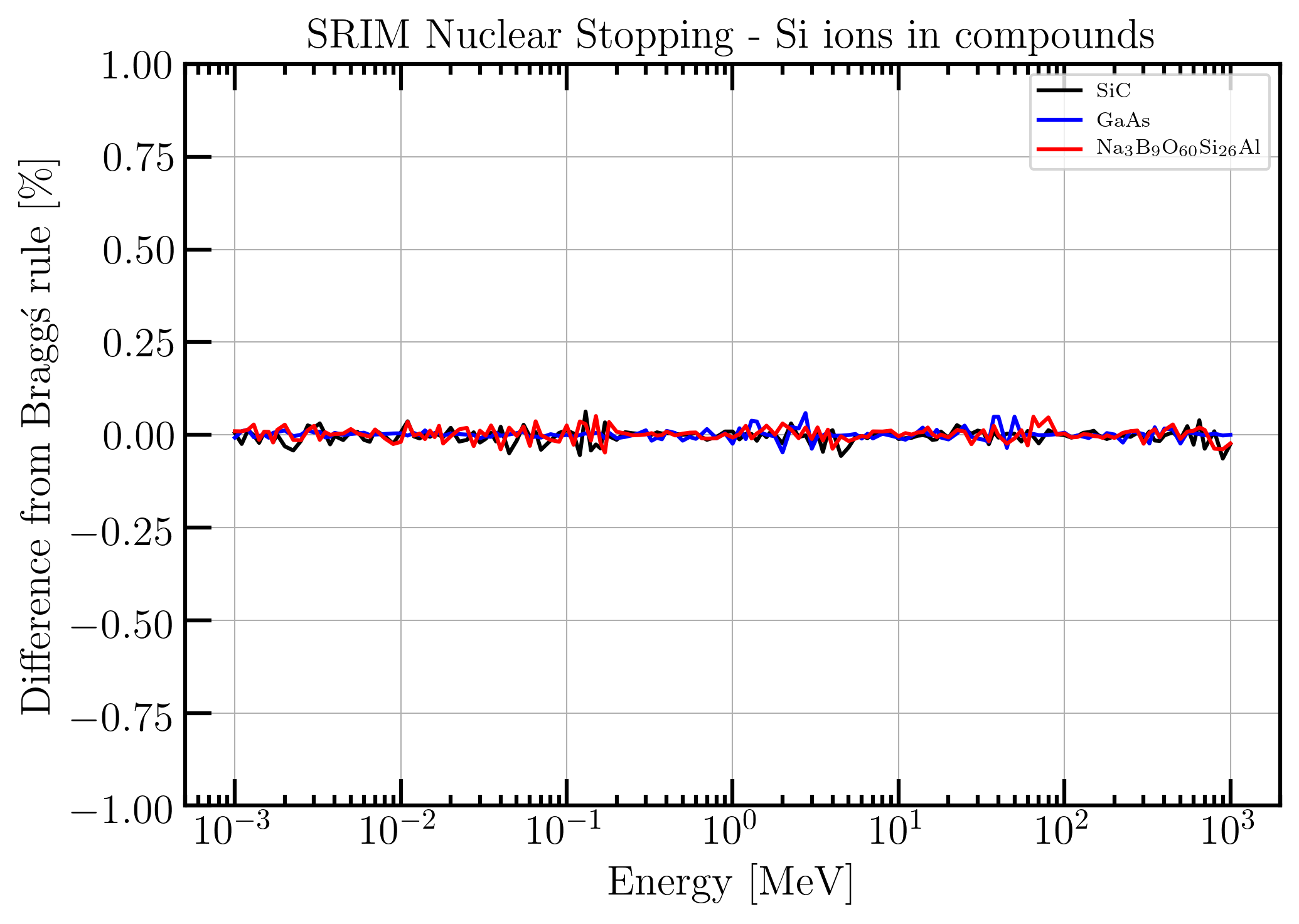 Figure 1. Percentage difference of the calculated nuclear stopping powers for Si ions in SiC, GaAs and Glass Borosilicate (obtained employing the Bragg's additivity rule with A-values from SRIM) with respect to those tabulated in SRIM.
Figure 1. Percentage difference of the calculated nuclear stopping powers for Si ions in SiC, GaAs and Glass Borosilicate (obtained employing the Bragg's additivity rule with A-values from SRIM) with respect to those tabulated in SRIM.
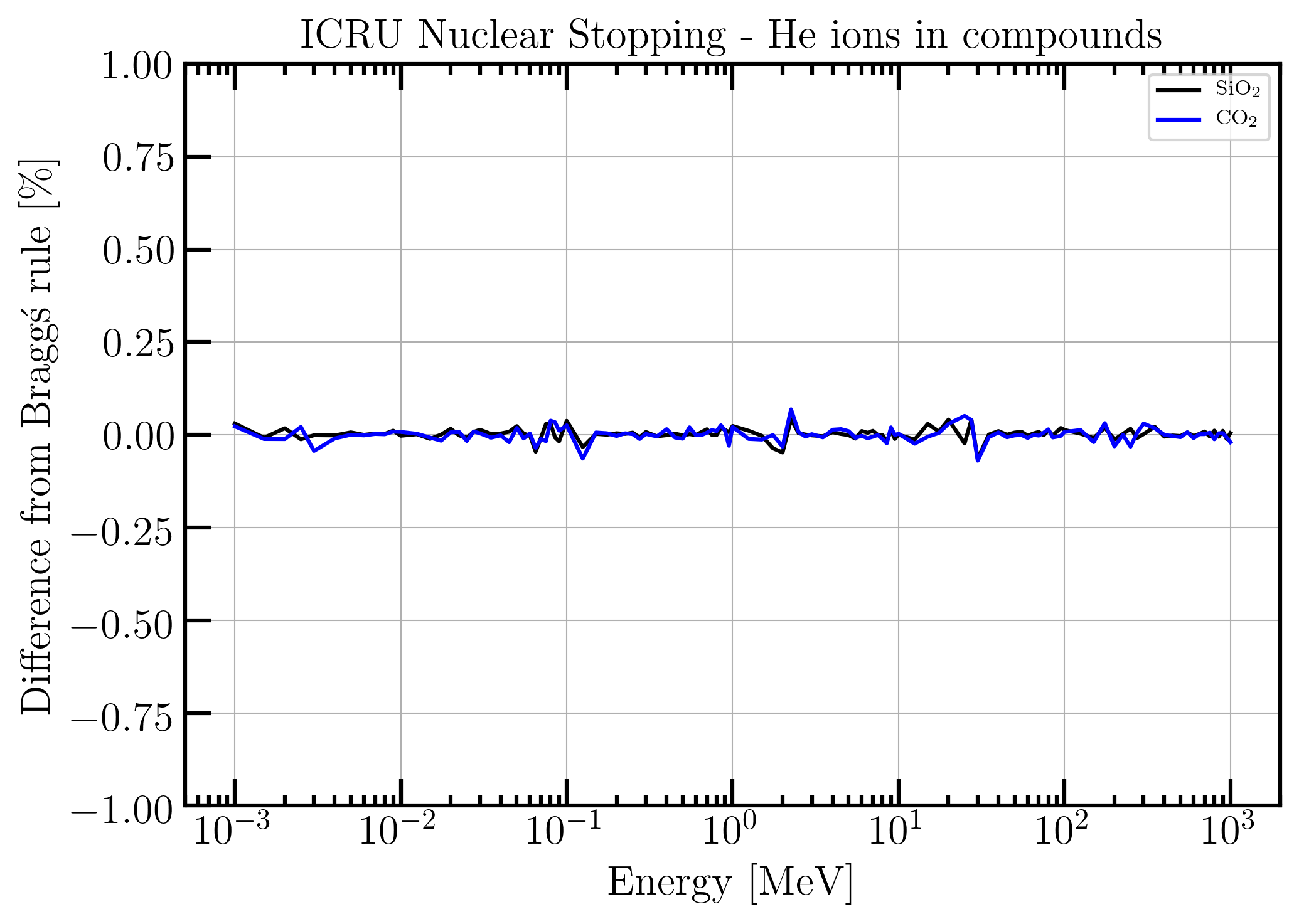 Figure 2. Percentage difference of the calculated nuclear stopping powers for Si ions in SiO2 and CO2 (obtained employing the Bragg's additivity rule with A-values from ICRUM (1993)) with respect to those tabulated in ICRUM (1993).
Figure 2. Percentage difference of the calculated nuclear stopping powers for Si ions in SiO2 and CO2 (obtained employing the Bragg's additivity rule with A-values from ICRUM (1993)) with respect to those tabulated in ICRUM (1993).
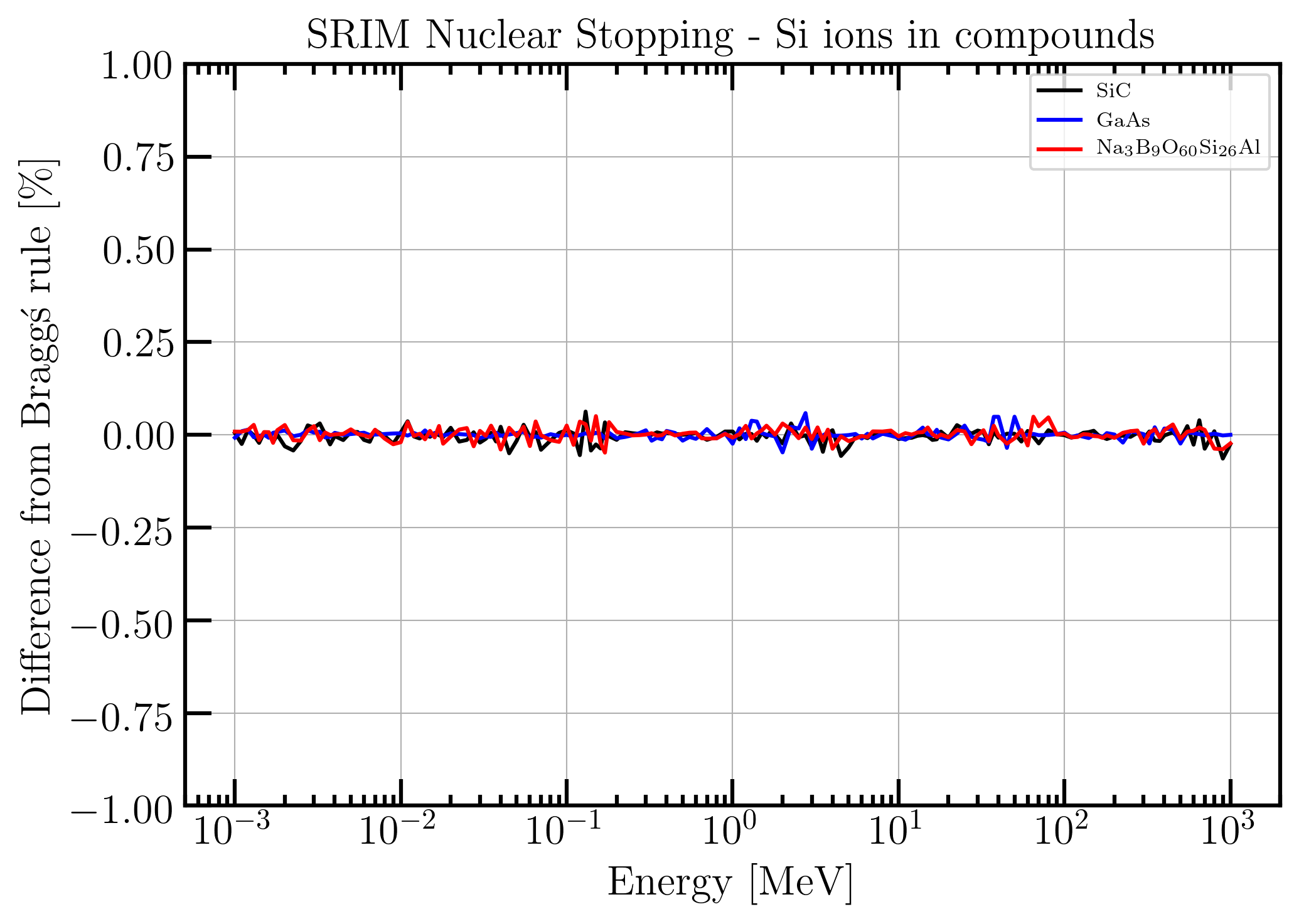
Figure 3. Percentage difference of the calculated nuclear stopping powers for Si ions in SiC, GaAs and Glass Borosilicate (obtained employing the Bragg's additivity rule with A-values from SR-NIEL database) with respect to those tabulated in SRIM.
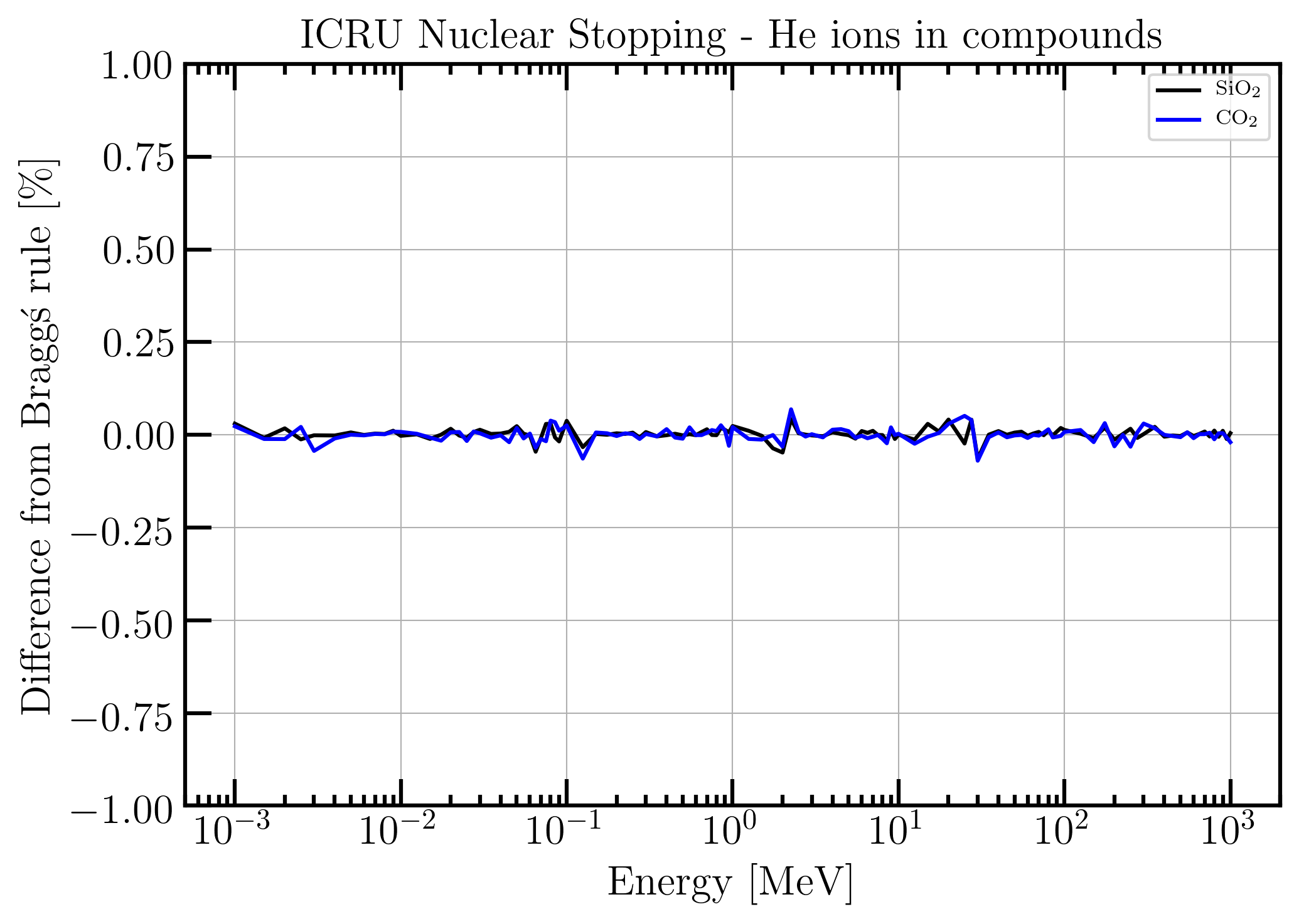 Figure 4. Percentage difference of the calculated nuclear stopping powers for Si ions in SiO2 and CO2 (obtained employing the Bragg's additivity rule with A-values from SR-NIEL database) with respect to those tabulated in ICRUM (1993).
Figure 4. Percentage difference of the calculated nuclear stopping powers for Si ions in SiO2 and CO2 (obtained employing the Bragg's additivity rule with A-values from SR-NIEL database) with respect to those tabulated in ICRUM (1993).
References
ICRUM - International Commission on Radiation Units and Measurements - (1993), Stopping Powers and Ranges for Protons and Alpha Particles, ICRU Report 49, Bethesda, MD; https://journals.sagepub.com/doi/10.1093/jicru_os25.2.iii ; webaddress: https://www.icru.org/report/stopping-power-and-ranges-for-protons-and-alpha-particles-report-49/
SRIM - The Stopping and Range of Ions in Matter - SRIM-2013
